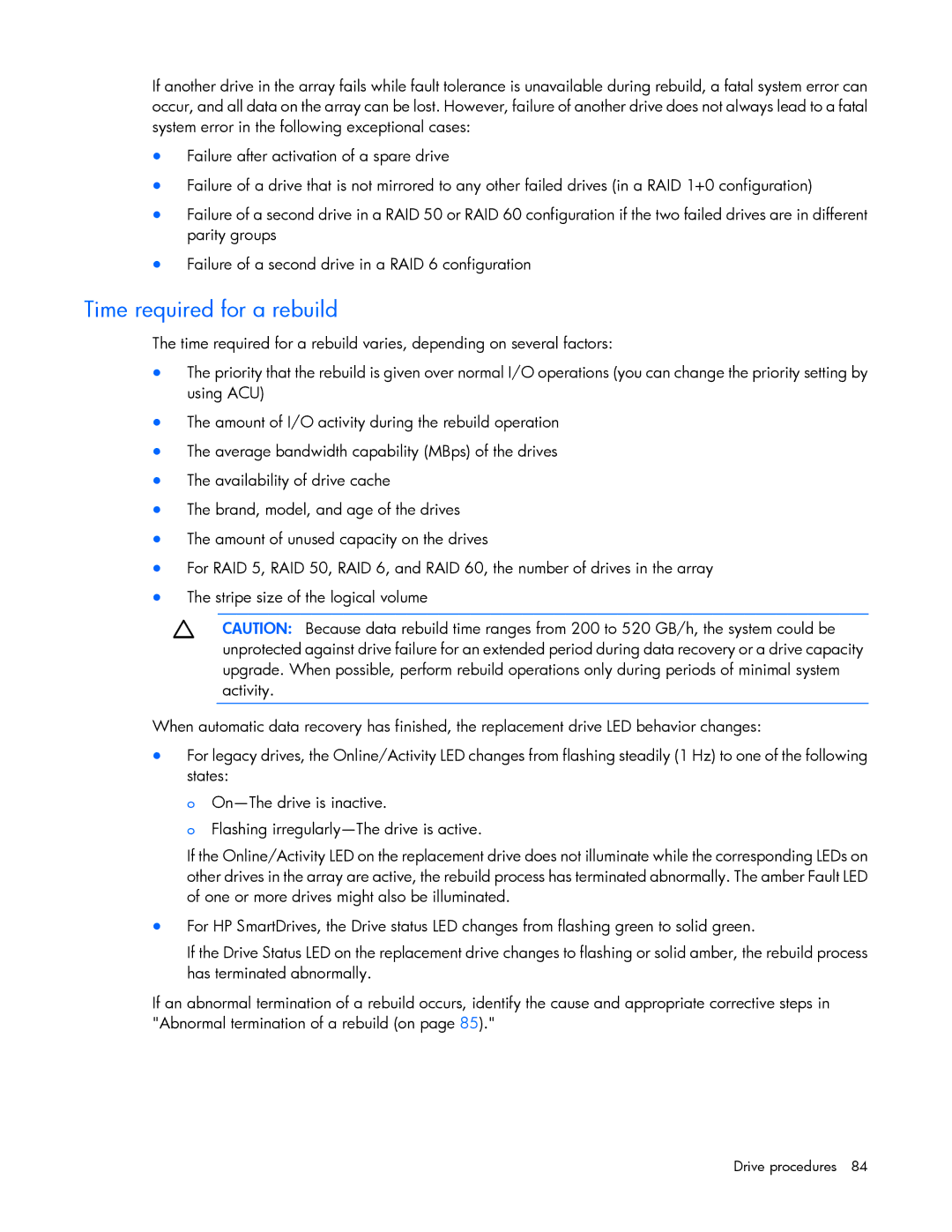
If another drive in the array fails while fault tolerance is unavailable during rebuild, a fatal system error can occur, and all data on the array can be lost. However, failure of another drive does not always lead to a fatal system error in the following exceptional cases:
•Failure after activation of a spare drive
•Failure of a drive that is not mirrored to any other failed drives (in a RAID 1+0 configuration)
•Failure of a second drive in a RAID 50 or RAID 60 configuration if the two failed drives are in different parity groups
•Failure of a second drive in a RAID 6 configuration
Time required for a rebuild
The time required for a rebuild varies, depending on several factors:
•The priority that the rebuild is given over normal I/O operations (you can change the priority setting by using ACU)
•The amount of I/O activity during the rebuild operation
•The average bandwidth capability (MBps) of the drives
•The availability of drive cache
•The brand, model, and age of the drives
•The amount of unused capacity on the drives
•For RAID 5, RAID 50, RAID 6, and RAID 60, the number of drives in the array
•The stripe size of the logical volume
CAUTION: Because data rebuild time ranges from 200 to 520 GB/h, the system could be unprotected against drive failure for an extended period during data recovery or a drive capacity upgrade. When possible, perform rebuild operations only during periods of minimal system activity.
When automatic data recovery has finished, the replacement drive LED behavior changes:
•For legacy drives, the Online/Activity LED changes from flashing steadily (1 Hz) to one of the following states:
o
o Flashing
If the Online/Activity LED on the replacement drive does not illuminate while the corresponding LEDs on other drives in the array are active, the rebuild process has terminated abnormally. The amber Fault LED of one or more drives might also be illuminated.
•For HP SmartDrives, the Drive status LED changes from flashing green to solid green.
If the Drive Status LED on the replacement drive changes to flashing or solid amber, the rebuild process has terminated abnormally.
If an abnormal termination of a rebuild occurs, identify the cause and appropriate corrective steps in "Abnormal termination of a rebuild (on page 85)."
Drive procedures 84
